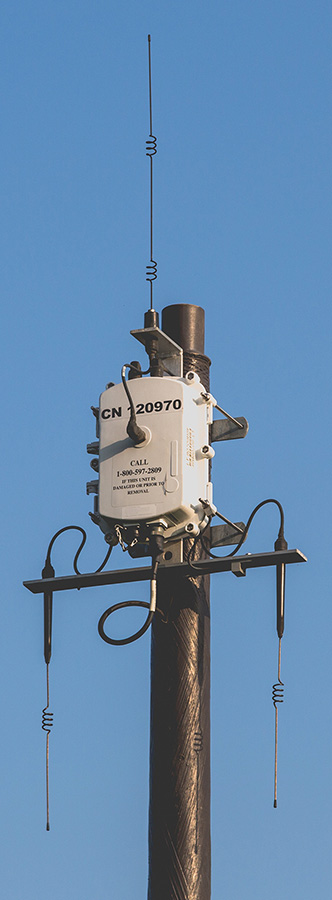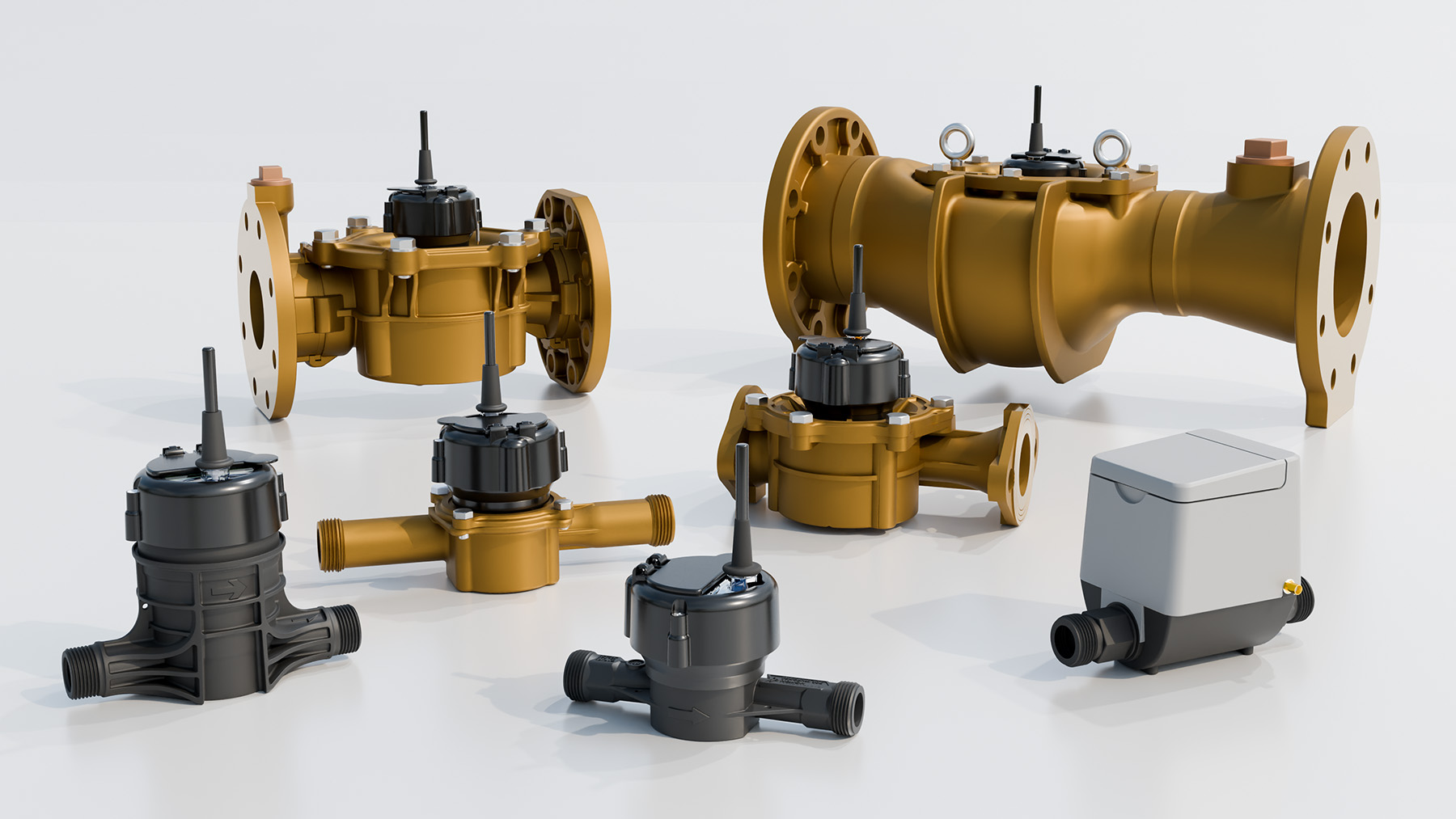
WHITE PAPER
Cellular vs. Fixed-Network AMI: Which is Right for Your Service Area?
Water providers should think strategically about connectivity investments.
Water utilities are embracing Advanced Metering Infrastructure (AMI), the wireless tech that enables smart meters to automatically transmit meter readings and other data. In fact, total AMI water-meter installations are expected to more than double by 2027.
It’s easy to see why: AMI eliminates the need to send crews around to drive the service area and manually collect readings, or to trust customers to report their meter readings accurately. Billing data and other vital information appears seamlessly in the utility’s billing and maintenance platform, freeing both front-line and back-office workers to focus on delivering results for customers.
But it’s important to remember that not all AMI systems are born equal.
When utilities transition to AMI, they need to make a big decision: will they use fixed-network AMI, or a cellular system?
• Fixed-network AMI uses radio frequencies to transmit meter data and requires utilities to build out and maintain a network of radio masts, repeaters, and other transmission infrastructure.
• Cellular AMI uses a distributed network of meters with individual cellular connections, each capable of “phoning home” with the data they’ve collected.
There are pros and cons to both approaches, and it’s important to give careful thought to your service area’s unique needs before pulling the trigger on expensive fixed-network infrastructure.
At Metron, we take pride in offering the most robust and highest-performing cellular AMI solution on the market, with many utilities enjoying read rates above 99%. Read on to find out why we believe most water providers are better off with a cellular metering solution.
Four Key Reasons to Consider Cellular AMI
Here are the five biggest reasons we believe that most utilities are better off with a cellular AMI solution:

1. No More Patchy Coverage
Fixed networks have a dirty secret: it’s almost impossible to achieve 100% connectivity. That’s because no matter how well-designed a network is, there will almost always be 5% or 10% of meters that can’t connect to existing radio masts. To capture data from those meters, utilities typically need to invest in additional repeaters and radio masts, driving up total installation costs by 50% or more. And in the meantime, utilities have to send crews out to take reads manually—the exact problem that AMI was supposed to eliminate.
Cellular meters, on the other hand, are typically plug-and-play: they can be connected effortlessly in virtually any setting, with data delivery verified instantly during installation. That makes them a no-brainer for rural utilities, where a fixed-network approach may require giving remote properties their own individual radio masts. But cellular is also a great option for dense urban areas, where buildings, walls, fences and other structures can interfere with the radio signals needed by fixed networks. Whether you’re looking to build a 100%-connected system from scratch, or to fill in the gaps in an existing network, cellular meters are often the smart choice.
2. Transparent Pricing—Up Front, and in the Future
Because achieving 100% connectivity with fixed networks is virtually impossible, providers often radically underestimate the cost of installing fixed AMI. It’s not just the raw cost of building the connectivity infrastructure: surveys and permits are needed, and to “fill in” missing meters, repeaters and masts must often be placed on property the city doesn’t own, requiring additional costs to secure long-term leases. Then there’s the cost of powering the system, maintaining complex transmission infrastructure over time, and replacing worn or obsolete parts.
At Metron, we often hear from utilities that feel misled by their fixed-network vendors. Spiraling capital expenditures and sunk costs can leave water providers feeling like they’re being taken advantage of—and can lead to angry exchanges with municipal leaders and rate payers, too. With cellular systems, by contrast, providers get clear up-front costs—just a simple per-meter fee, with no need for expensive additional infrastructure—with guaranteed connectivity, and ongoing support from a team dedicated to ensuring that 100% of installed meters operate exactly as they should.
3. Flexible Connectivity at Scale
Fixed-network AMI is brittle: even when it works well, there’s no guarantee that it will keep working in the future. New construction can block line-of-sight between meters and gateways or repeaters, knocking entire streets offline, and rebuilding the network typically requires costly new infrastructure investments. A cellular system, on the other hand, is far more flexible and thus far easier to scale. Whether you’re adding a single meter to plug a stubborn gap in an existing network or upgrading your entire service area, cellular AMI offers a straightforward solution that’s well-suited to any stage of the deployment process.
Another key consideration: fixed-network AMI requires utilities to budget for upgrades and expansion at the network level. Adding even a single extra property to your existing service area can require expensive new infrastructure—and once you’ve invested in radio masts and other equipment, it’s hard to change track. That creates lock-in that can leave utilities chained to inferior connectivity solutions for years or even decades. With cellular systems, utilities can upgrade or expand their network incrementally, making budgeting far easier—and with no lock-in, providers remain motivated to deliver high-quality software tools and amazing customer service even after the meters are installed.
4. Enterprise-Grade Resilience
If you’re using fixed-network AMI and something goes wrong—from a lightning strike to a construction worker clipping the wrong wire—then it’s up to you to fix it. That means investing time and money to get meters back online—and if additional parts or replacement hardware is needed, you could be looking at weeks or even months before the network is restored. In the meantime, of course, you’re left dealing with angry customers and forced to send work crews out to collect missing readings manually.
With cellular AMI, on the other hand, utilities use the same cellular networks relied on by every consumer and business in your community. If something goes wrong, national network providers have the time, resources, and logistical systems in place to put things right. They’ll be under pressure to do so fast, too, because the entire community is counting on them. Better yet, Metron’s smart meters will continue to capture water data during the short down-time of a cell tower, and will transmit the stored data as soon as the cellular connection is restored, meaning that there are no gaps in water usage history.

Common Misconceptions About Cellular AMI
Given all these benefits, you might ask why utilities ever choose fixed-network AMI systems. It’s a good question! Here are three common misconceptions we sometimes hear from utilities weighing the pros and cons of cellular and fixed-network AMI:
“Shouldn’t utilities own their own AMI?”
Many utility leaders believe that owning network infrastructure is the best way to keep control over their operations. The reality is that fixed-network AMI often means surrendering control—because it leaves providers with fewer choices about their own future.
Fixed-network systems are hard to scale, and require hard-to-predict capital investments, plus costly maintenance over time. All too often, utilities are forced to play the role of telecom companies or network maintenance firms in addition to focusing on providing water for their customers. With cellular connectivity, utilities can avoid hidden costs and add meters flexibly, where and when they’re needed, to regain control over their metering ecosystem.
“What if something happens to the cellular network?”
Cellular networks are always evolving—and while that means more resilience and faster connections, it leads some utilities to wonder about the network longevity. Fortunately, Metron has been building cellular smart-meters since 2014—and with over a decade’s experience, we know how to do it right.
We have strong relationships with trusted national cellular network providers—and we leverage those relationships to ensure compatibility over our meters’ full operational lifespan. Our meters operate on the LTE Cat M network – an industry-standard cellular communications channel that’s designed for the “internet of things”. That’s why, unlike fixed-network providers, we’re able to guarantee no-hassle connectivity for every meter we sell as part of our industry-leading flange-to-flange warranty.
“Will my customers worry about safety?”
Inevitably, customers sometimes fret about the safety of new technologies. Fortunately, when it comes to cellular meters, decades of research show that there are no grounds for concern. Our cellular meters only transmit for a few seconds every day, and scientists say you’d need to stand next to a smart meter for 375 years to get the same energy dose you get just from using a regular cellphone in three months (at one hour’s use per day).
By contrast, many fixed-network AMI systems transmit almost continuously, and require the installation of 40-foot radio antennas. That often leads customers to object on cosmetic grounds, and puts safety concerns top-of-mind for them too. The bottom line: cellular systems are incredibly safe—and are generally more readily accepted by residents.
Cellular AMI is the Future of Smart Water
Cellular technologies currently account for about 5% of smart meters in Europe and North America—but massive growth is expected in coming years. Utilities that avoid chaining themselves to costly, brittle, and unscalable fixed-network infrastructure will be better placed to adapt to emerging technologies (including advanced analytics that may rely on high-resolution water usage data) and to deliver best-in-class metering solutions for their customers in years to come.
Metron is the industry leader in cellular smart metering solutions. Get in touch to find out how cellular connectivity can support your organization’s growth plans.